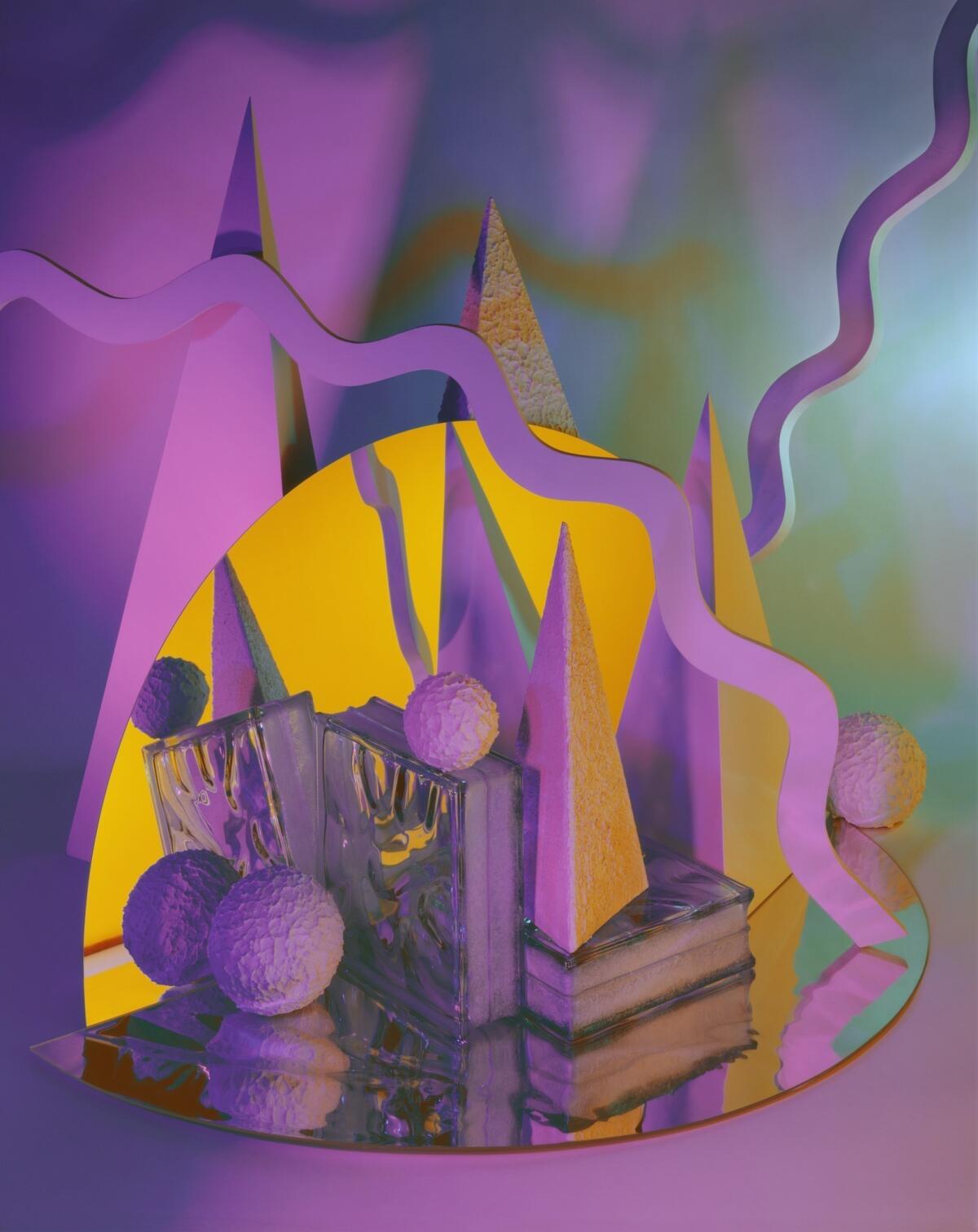Review: Take another look: The alternative world of ‘Barbara Kasten: Stages’
- Share via

“Barbara Kasten: Stages” makes you wonder why the Museum of Contemporary Art doesn’t organize more exhibitions like this: right-sized surveys of works by artists who are not superstars but whose oeuvres enrich a visitor’s understanding of the present.
Organized by the Institute of Contemporary Art in Philadelphia, and overseen in Los Angeles by MOCA senior curator Bennett Simpson, the nicely focused exhibition at MOCA Pacific Design Center lays out Kasten’s artistic concerns. The way the world changes when it becomes a picture — and what this means for viewers — is Kasten’s great subject.
Long before phones became cameras and digital devices became our constant companions, the Chicago artist began her exploration of the interface between three-dimensional reality and its two-dimensional representation.
In Philadelphia, the exhibition included nearly 80 works that Kasten (born in 1936) made from 1972 to 2016. In the PDC show, the time span is the same but the number of works has been whittled to about 50. This makes for a curious chronology: Forty-four works give visitors a good sense of what Kasten was up to from 1972 to 1988. Then there’s a two-decade gap. It’s followed by nine works Kasten has made since 2007.
Despite the stop-and-start chronology, heavily weighted to the first decade of Kasten’s mature work, the installation forms a coherent whole. It tells a sensible story because Kasten defined the parameters of her practice from 1974 to 1986. Her recent pieces do not break new ground so much as they riff off of those developments, providing variation and elaboration on the same themes and ideas.
The nucleus of Kasten’s art can be found just inside the entrance, at the foot of a massive staircase that takes you to the main gallery. It’s an awkward, nooks-and-crannies sort of space, but it suits Kasten’s purposes: to explore the transitional territories where bodies bump up against objects, objects become images, and images dissolve into memories — which circle back to the bodies that house them.
Three chairs, each painted a solid color and overlaid with knotty fabric abstractions hand-woven by Kasten, are lumpy instances of this. More effective are Kasten’s 10 wall works, in which she overlays finely meshed screens, photograms of screens and inky washes to create moiré patterns that shift as you move around them. Disentangling actual shadows from printed images and painted shadows leads to conundrums that make you look twice and think carefully.
Upstairs, Kasten amps up the ambiguity in variously sized silver prints, photograms, Polaroids, Cibachromes and digital prints. To make them, she set up props, screens, mirrors and sheets of glass in her studio. She illuminated these abstract dioramas so that they cast dramatic shadows.
The scale of the things in her pictures is indeterminate. Even more confusing are the relationships between figure and ground, abstraction and representation, solid object and open space. The rich range of silvery grays that Kasten cultivates will provide viewers with ample room to maneuver.
In the 1980s, Kasten added miniature Greek columns and doll-size sculptures to her studio setups. She also illuminated them in a palette that rivaled “Miami Vice” for pastel garishness.
She shot four of her largest collages outdoors, after illuminating buildings by Richard Meier, Frank Gehry, Cesar Pelli and Arata Isozaki in a rainbow of supersaturated colors. Strange as it may seem, the images that result from these labor-intensive projects are less captivating than Kasten’s studio works.
That’s where her most recent pieces take us. It’s where her love of getting lost in the details is palpable.
------------
MOCA Pacific Design Center, 8687 Melrose Ave., West Hollywood. Through Aug. 14. Closed Mondays. Free. (310) 289-5223, www.moca.org
Follow The Times’ arts team @culturemonster
The biggest entertainment stories
Get our big stories about Hollywood, film, television, music, arts, culture and more right in your inbox as soon as they publish.
You may occasionally receive promotional content from the Los Angeles Times.







